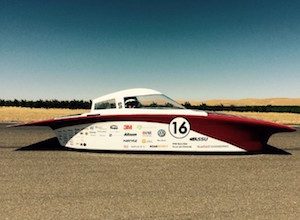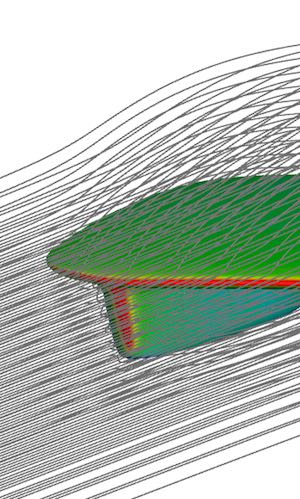The Stanford Solar Car Project is using the Sabalcore HPC Cloud to significantly improve aerodynamics for their entry in the 2015 World Solar Challenge.
We are very excited to sponsor the Stanford Solar Car Project. We are convinced that young talent, with fresh ideas and extraordinary commitment, is tremendously important for the future,” said John Van Workum, CEO of Sabalcore Computing. “Sponsoring the solar car project offers Sabalcore the opportunity to work with highly-motivated, enthusiastic, and hard working students. It is of great interest to us to support this commitment and upcoming engineers. This underlines Sabalcore’s commitment to provide the computing resources necessary to enable those with new solutions to solve tough engineering problems.”
The Stanford Solar Car Project is America’s top solar car team, and the best undergraduate team in the world. The project began in 1989 as an entirely student-run, non-profit organization fueled by its members’ passion for environmentally-minded technology. The team designs, builds, tests, and races solar-powered vehicles as part of a global initiative called the World Solar Challenge, a 2000-mile solar trek across the Australian Outback.
As an academic effort, the project provides a unique opportunity for Stanford University students to gain valuable hands-on engineering and business experience in raising community awareness of the power of solar energy and the increasing need for lighter, more aerodynamic, and more efficient vehicles. The team operates on a two-year project cycle that becomes more than another extracurricular activity. Students on the team balance their involvement with work and academics, but always remain dedicated to the collective effort of building from the conceptual to the racing phase one of the world’s’ most efficient vehicles.
One of the largest educational opportunities available to student members is the months-long aerodynamic design and optimization of the car’s shape. Because aerodynamics represent some 70% of power drawn by the solar car, the team starts aerodynamic optimization from scratch every two years for each new vehicle. Arctan’s aerodynamic design provided the team a new opportunity to set up a professional tool-chain of in-house design and meshing, with external simulation. The car’s asymmetrical body, or catamaran design, as it’s called, required detailed simulation to understand and refine. After initial simulations comparing symmetrical and asymmetrical cars in general, the team embarked on a CFD iteration and refinement process that took over five months and utilized over 100,000 core-hours using Sabalcore’s HPC Cloud.
With over three dozen iterations, Arctan proved one of the most intensively-designed vehicles in the Stanford team’s history. The small student aerodynamics team, composed of undergraduates, post-doctoral, and Ph.D. students, achieved a 12% simulated drag reduction from the team’s 2013 car, and measured a similar 10% drag reduction in an automotive wind tunnel test at the car’s 55mph cruise speed. Arctan has accumulated nearly 4500 test miles and is scheduled to complete the near 2,000 mile race across the Outback starting on October 18th.
Sabalcore provides lead high-performance computing (HPC) services in the Cloud specifically designed for scientific and engineering problems that require vast amounts of compute resources. The service enables scientists and engineers to take advantage of large parallel computing systems without the upfront investment in computer hardware and long-term utility maintenance costs. Sabalcore brings over 15 years of experience to help its customers achieve discovery and success.







Very nice application and article. What CFD/aerodynamic software is being used and how/why was it chosen?